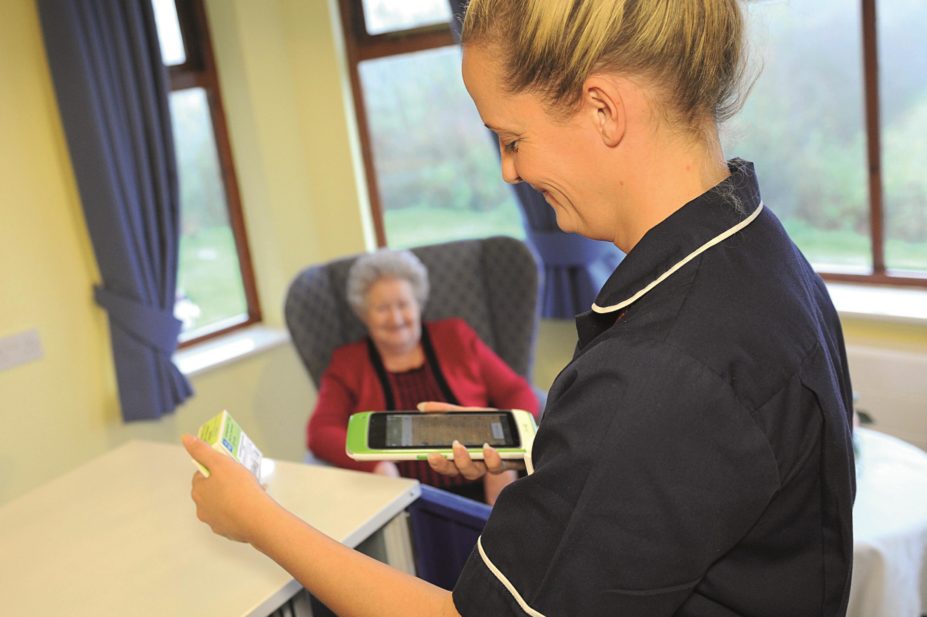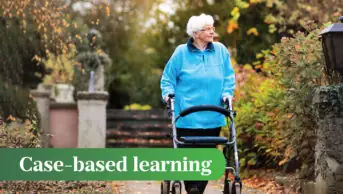
Beacon Digital
A project trialling a barcoding system for administered medicines in Welsh care homes has shown that the system saves staff time, improves patient safety and reduces medicines waste.
The project, which involved 30 care homes, began after healthcare technology firm Beacon Digital received a £455,000 grant from the Welsh government’s technology and telehealth fund in autumn 2014.
Working with Swansea-based Abertawe Bro Morgannwg Health Board and the University of Cardiff — which is analysing the impact of the pilot over three years — Beacon Digital recruited the care homes and 16 pharmacies to take part in the project. Pharmacies and care homes in Swansea, Tondu, Neath Port Talbot, Penarth and Carmarthen are taking part, with more than 500 care home and pharmacy staff trained to use the barcoding system.
When dispensing medicines for care home residents, a pharmacy applies a dispensing label that includes a two-dimensional barcode containing information that identifies the patient and the medicine. The pharmacy uses a medicine barcode scanner to make sure the correct medicine is dispensed. It then emails a medicines administration record (MAR) chart to the care home each week.
“Dispensing in this way is far quicker than our previous system, which involved dispensing medicines in blister packs [also known as medication compliance aids],” says Jane Soltys, director of Washington Pharmacy in Penarth, Glamorgan, which is taking part in the pilot.
“Not only does it mean that medicines can stay in their original packaging, there is also less chance of a medication error when using barcode validation and we have seen a 75–80% reduction in the medicine returns we receive from care homes — mainly due to a reduction in the ordering of unnecessary ‘PRN’ [‘take when required’] medicines and better stock control at care homes,” she adds.
At the care home, staff use a handheld device to access each resident’s record and MAR chart. On selecting a resident, the programme shows the resident’s photo, their date of birth, any drug allergies they have and a list of any medicines due to be administered. A barcode is then scanned on both the resident’s medicine cabinet and on the labelled medicine itself to identify if the correct medicine has been selected.
The system maintains a tally of how much stock is left in each box and alerts the pharmacy and the care home staff when less than eight days’ supply is remaining.
Soltys believes one benefit of the system is that data from the care home and the pharmacy are collected via a central electronic cloud — allowing both sites to see it.
“We can see every process relating to medicine management within the care home,” she explains. “This brings the pharmacy closer to patient care and creates new opportunities for medicines optimisation and clinical review. It has enhanced our relationship with the care home staff.”
Amy Curtis, manager of Tower Hill Residential Home in Penarth, has also seen several benefits since the system was implemented. “There is less paperwork and no blister packs to store, and the time taken for staff to complete a drug round has reduced considerably.” She says a drug round that previously took two hours can be done in around 45 minutes thanks to the new system.
“The new system is more personal and means our staff can spend more time with the residents. Also, from a management perspective, we have an accurate and easily retrievable record of when medicines haven’t been administered and it helps to identify training needs among the staff,” she adds.
Clive Bowman, executive chair of Beacon Digital, says that, on average, each care home was carrying around £500 worth of overstocked medicines. “Improved stock control in each residential home ensures that fewer medicines reach their expiry date before use and therefore have to be thrown away.”
After visiting Tower Hill on 19 November 2015, Mark Drakeford, the Welsh health and social services minister, said the system makes the best use of pharmacists’ time and expertise, reduces waste and improves safety for residents.


